At Edge Field Day 3, VMware Edge and SASE started their presentation trying to get the audience to forget all they know about VMware. Although the VMware Edge team zapped us by a neuralizer, from Men In Black, we definitely did not forget who VMware is. Let’s explore how they are and are not the VMware we all know.

Software Defined Edge
VMware SASE Edge says they are building the software defined edge.
They have taken ESXI and built a version that can run on commodity hardware at the edge. Although, it looks like ESXI and is based off it, it is something different.

When it comes down to what they are providing, it consists of a slimmed down version of ESXI at the edge, that can run containers, Kubernetes, or VMs. There is a power in that idea for organizations that use VMware. It’s the software they know but built for the edge.
With all the issues with VMware lately, there are still plenty of organizations that still are heavily investing in VMware. It was good to hear about something not being killed by VMware.
VMware at the Edge
As someone who has run full ESXI on commodity hardware Intel NUCs, the experience is not the greatest. A modified version is a welcomed service for smaller edge sites. The VMware team named five differences and challenges of the edge: scale, limited networks, edge hardware and protocols, limited onsite personnel, and edge security.
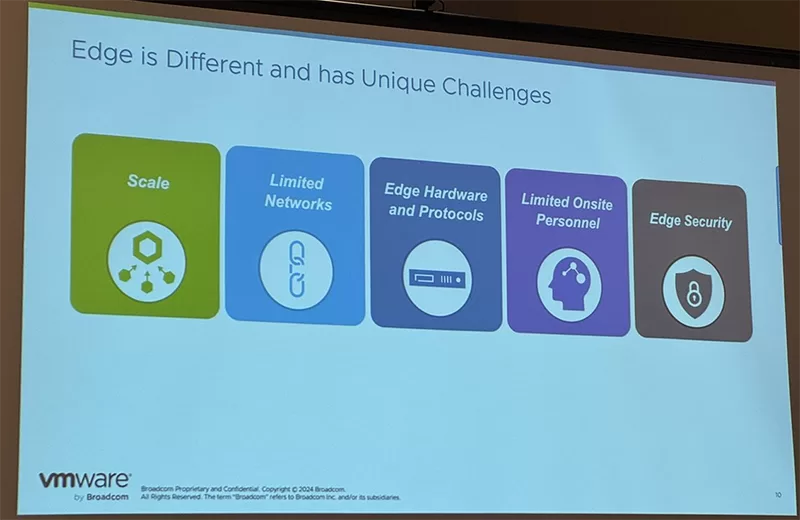
These are things we heard across Edge Field Day 3. This is a rough definition of what the edge is. Just like several years ago when we were asking what the cloud was, we are finally making it through the cloudiness of the edge.
Scale means you need to deploy tons of applications at a large scale across many sites. This is the power of containers and edge applications.
The Limited Network means the sites these applications are being deployed that do not have the most robust network connectivity to the internet and cloud. Often edge applications could be deployed in remote locations such as mines or small retail locations. Deployed edge application protect against network downtime by keeping the compute as close to the capture source.
Edge hardware and protocols are often built for sites that have more ruggedized requirements such as mines. Edge hardware that is built to be ruggedized is often a requirement for these sites.
Most edge sites do not have a fully staffed IT department at each location. When there is downtime, often thousands of dollars can be lost. These edge sites need to rely on Zero Touch Provisioning and remote management. Applications need to restart automatically because getting a technician on site can be time consuming and challenging.
Lastly, since the edge compute hardware and software is located in largely unsecured sites such as a back office or in the field. Edge compute need to have security precautions built in. Encryption, robust protection against tampering. Protection if a device is stolen are all requirements of the edge that we typically don’t have in a cloud or data center.
VMware Edge Compute for Edge Applications
The modified ESXI is named VMware Edge Compute. While the base system looks and feels just like its predecessor, the are plenty of changes that address the edge specific issues.
First you can control the edge compute hardware and software to improve security of the edge. If you want the Edge Compute Stack to look differently, that’s possible. The hardware can be commodity hardware such as the Intel NUC (what they were testing live at EFD3) or run on OnLogic or other vendors. Large data centers are no longer required at every site.
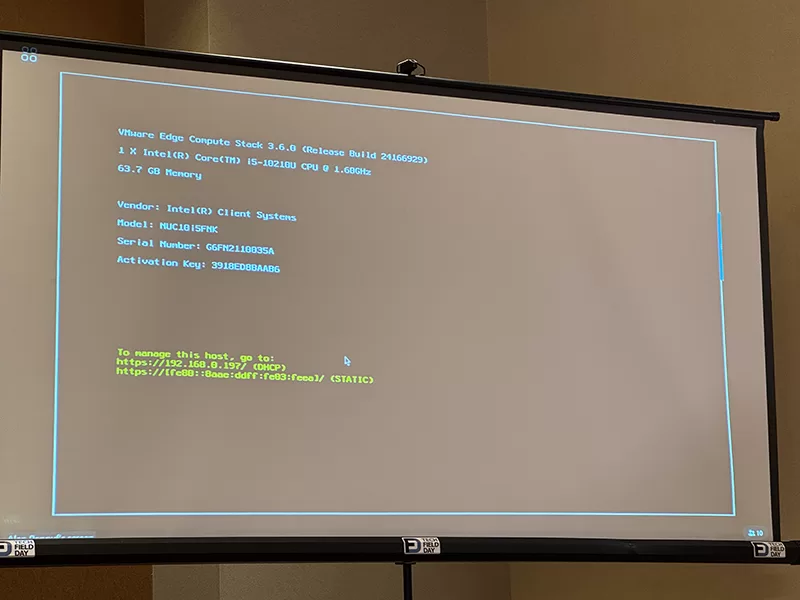
When you have hundreds of sites that need to run the same applications, VMware Edge helps with scale. You can set devices to pull new software down or you can push it from a central site. Through the use of Zero Touch Provisioning, you can scale a system out quickly.
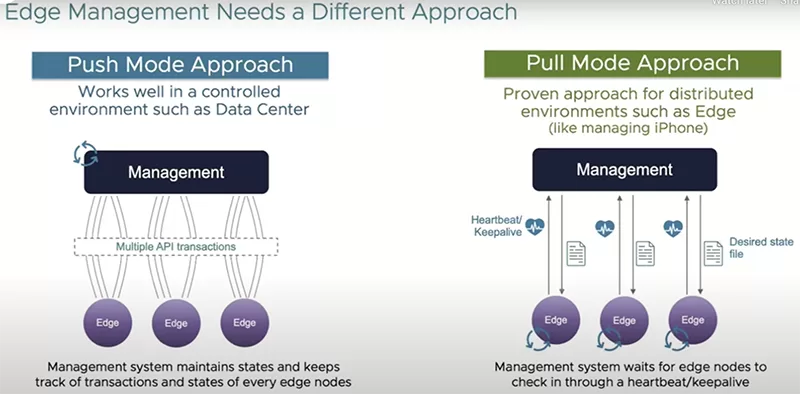
With VMware Edge Compute, you can push a couple text files out to your the edge systems. Those edge systems grab files from a GIT repository and start configuring your apps for the edge site. The site can be fully automated to install everything needed. This allows you to drop ship a device to a site and it will grab the latest configuration once powered on at the site.
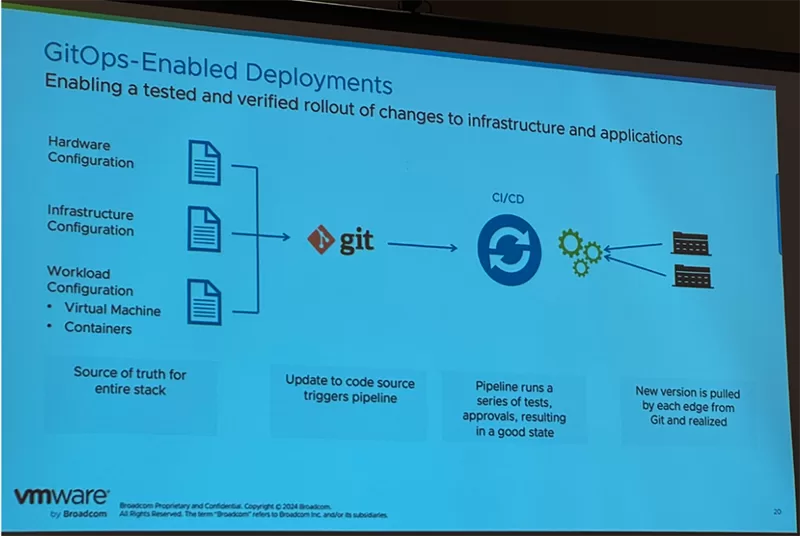
Having the compute on site, protects against the other edge issues such as limited networking. All processing can be handled at the site and only necessarily result need to be uploaded to a central data center.
IOT Edge
As the IOT space continues to grow, the data processing often needs to be handled closer to the device for latency reduction. In the demo, a WiFi Axis Camera was connected via a WiFi router to the NUC Edge Computer with a display showing different statistics. This demo obviously doesn’t require low latency, but specific applications at sites could. The applications running on the NUC could be sending data to the cloud as needed but can be all self contained to protect against the complications that come with the edge.
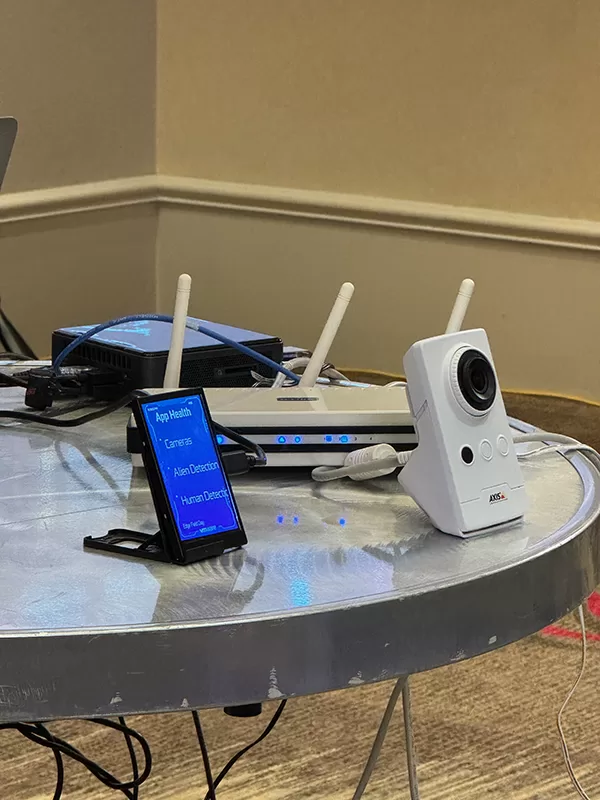
VMware Edge Is and Isn’t The Same VMware
VMware Edge is still the VMware that you’ve come to know. The software is a modification of what we all know. The neuralizer didn’t zap our minds of what we know about VMware with the uncertainty surrounding what’s next. It did open our view to see VMware Edge as the powerhouse it is.
The Edge product line has been largely left alone by the Broadcom acquisition, compared to the other VMware products. It continues to operate as any Edge compute orchestrator is expected. You can run VMs, Kubernetes, and Containers at the Edge on similar software that you know compared to the rest of your data center systems. That has a benefit to some people to keep things under a similar known solution.

